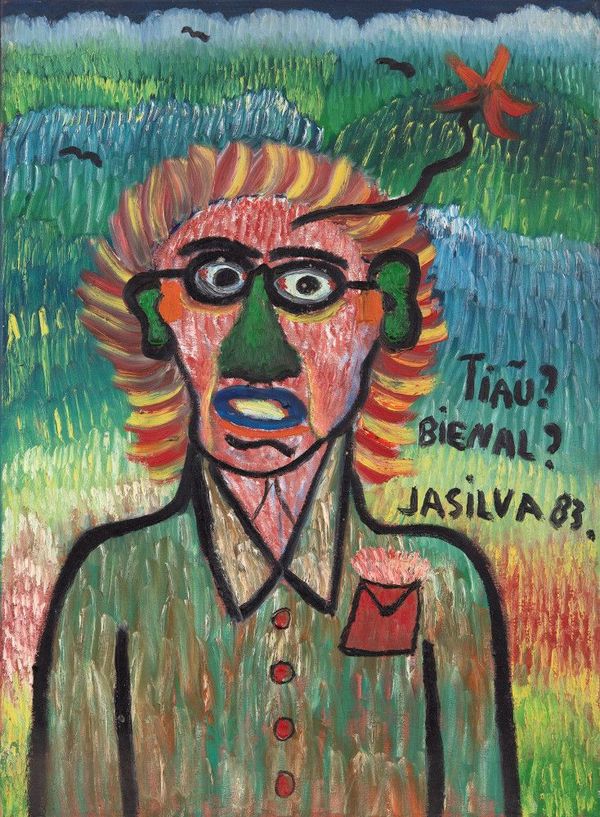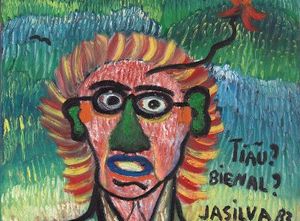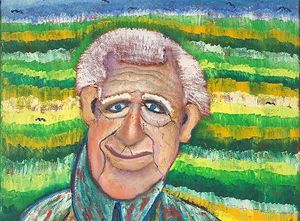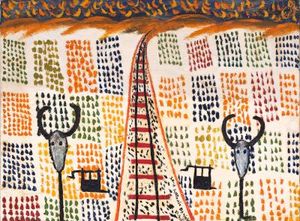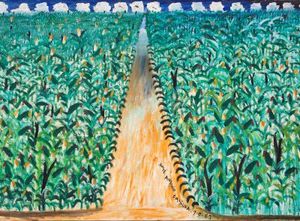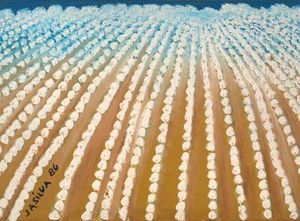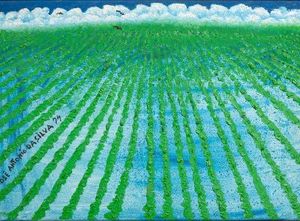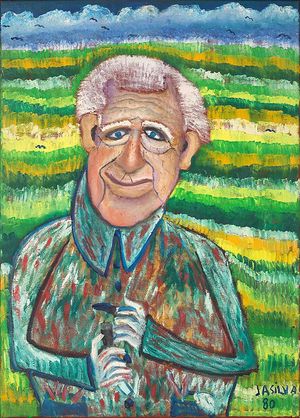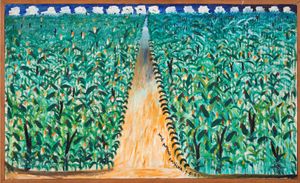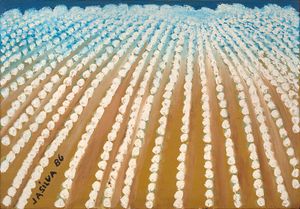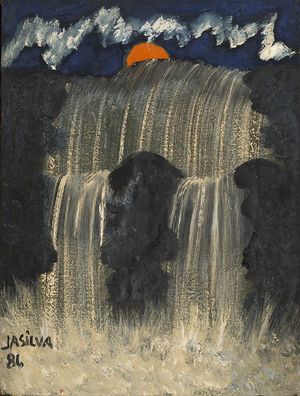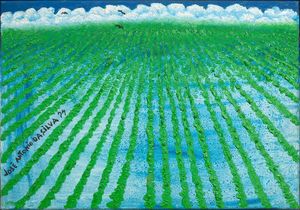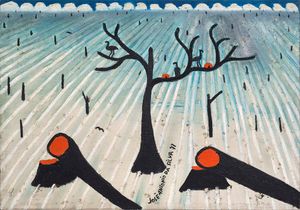Son of coffee farm workers from the countryside of São Paulo, José Antonio da Silvia worked various jobs on farms in the north and northeast of the state for the first twenty years of his adult life. In the early 1930s, after marrying Rosinha do Jaborandi and having his first children with her, he built his house on the banks of a stream on a farmer's property, where he worked as a wood cutter and tree feller. In 1936, he quit farmwork and moved permanently to São José do Rio Preto, where he began working as a doorman in hotels and other establishments. The Brazilian coffee cycle – a period in which coffee was the main export product in the country - had brought population growth in the countryside, as well as the expansion of urban centers, railroads and industries that merged with the rural world of the cotton, livestock and sugar cane economies. In the 1940s, José Antonio da Silva's paintings signaled the changes in the social fabric of the region. His landscapes often include figures of liberal workers, settlers, ranchers and farmers - whether in scenes of rest, leisure or work.
Defying an exhausting routine of manual labor that rewarded him with misery and, against his social environment, José Antonio da Silva began to draw. As a child, he used to draw using coffee leaves and, as an adult, he used pencil on cardboard to make drawings that were used as decoration in the house he shared with his wife. This fact did not go unnoticed by his family and his drawings earned him the label of lunatic.
In 1946, Silva was informed about a painting competition organized by the Casa de Cultura in São José do Rio Preto. At the time, the artist, his wife and their six children lived together in a single room provided by the city's Centro Espírita Allan Kardec. Lacking funds to buy canvases, Silva painted his first three works on flannel. They were sent to the exhibition and made a strong impression on the jury, composed of critics Lourival Gomes Machado, Paulo Mendes de Almeida and philosopher João Cruz Costa - all connected to São Paulo modernism. Although the jury had nominated Silva to receive first place in the competition, the organizing committee overturned the decision and relegated him to fourth place.
This positive critical reception, however, had a lasting impact on Silva's career. Just two years later, in 1948, he had his first solo show at the Domus Gallery in São Paulo. The thirty-seven works presented at the exhibition consisted of landscapes of the São Paulo countryside: coffee plantations, cattle, field workers, as well as scenes of violence and scourge. During this show, Pietro Maria Bardi acquired ten of the artist's works for the collection of the Museu de Arte de São Paulo Assis Chateaubriand - MASP. In the same year, Francisco (Ciccillo) Matarazzo acquired the work A fazenda de café and donated it to Nelson Rockfeller, in the interest of making it part of the collection of The Museum of Modern Art New York – MoMA (today the work does not belong to the museum's collection and its location is unknown).
The following year, in 1949, José Antonio da Silva took part in exhibitions alongside the most important Brazilian modern painters, such as Alfredo Volpi, Aldo Bonadei, Di Cavalcanti and Flávio de Carvalho. That same year, the Museu de Arte Moderna de São Paulo published the painter's first novel, Romance de minha vida. During the 1950s, Silva took part in several national and international exhibitions. In 1951, he participated in the 1st Bienal de São Paulo; in 1952, he exhibited two paintings in the XXVI Venice Biennial; in 1953, he was selected by the jury to take part in the 2nd Bienal de São Paulo; in 1955, he was again selected by the jury to take part in the 3rd Bienal de São Paulo. He was not selected to participate in the 4th edition of Bienal de São Paulo, a fact that provoked an angry reaction in the artist, leading him to produce a series of paintings that were provocative towards the institution. In 1959, Henry Ford II acquired the work Paisagem da fazenda and donated it to the Detroit Institute of Arts (USA). That same year, José Antonio da Silva took part in the important group show Brasilianische Kunst der Gegenwart / Brazilian Art Today, alongside artists such as Lygia Clark, Waldemar Cordeiro, Flávio de Carvalho and Di Cavalcanti. The show toured several European countries.
During the 1960s, José Antonio da Silva's work continued to receive institutional acclaim. In 1966, Silva had a special room dedicated to his work in the 32nd Venice Biennale. He took part in several editions of the Bienal de São Paulo until 1967, when he submitted a long list of works and received approval for only two of them. This led the artist to an ultimate breakup with the institution, and he proceeded with his paintings that attacked the Bienal organization. His dissatisfaction also led him to create the Museu Municipal de Arte Contemporânea in São José do Rio Preto in 1968. In 1967, the artist began to work on the Via Crucis for the Paróquia Nossa Senhora dos Pobres, a church located in Butantã, in the city of São Paulo.
Over the following decades, Silva was already part of several anthological exhibitions on Brazilian art, he took part in various national and international exhibitions, and he was awarded prizes and retrospective shows in public institutions. While he was still alive, his work was featured in various books, texts and dictionaries on the history of Brazilian art, such as those written by Pietro Maria Bardi, Theon Spanudis, Mário Pedrosa, Ferreira Gullar and Frederico Morais.
Works by Silva are part of institutional collections such as Museu de Arte Moderna de São Paulo - MAM SP; Museu de Arte de São Paulo Assis Chateaubriand – MASP; Museu de Arte Contemporânea da Universidade de São Paulo - MAC USP; Museu Nacional de Belas Artes do Rio de Janeiro; Pinacoteca de São Paulo; and Detroit Institute of Arts, USA.
